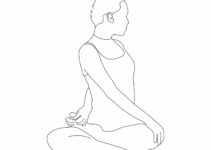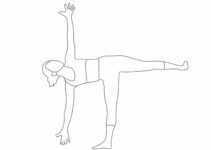Patanjali’s 8 Limbs of Yoga
The proper means are just as necessary as the end in view. Patanjali mentioned these means as the eight limbs of Yoga for improving well-being and moving towards the inner journey. The entire mechanism of yoga revolves around these eight stages. The various yoga rishis and munis have elaborated on their aspects. Here, we will discuss what the eight limbs of yoga are and what its different types are. The eight limbs are:
- Yama (universal moral commandments)
- Niyama (self-purification by discipline)
- Asana (posture)
- Pranayama (rhythmic control of the breath)
- Pratyahara (withdrawal and emancipation of the mind from the domination of the senses and exterior objects)
- Dharana (concentration)
- Dhyana (meditation)
- Samadhi (a state of super-consciousness).

8 Limbs of Yoga
Yama-the first limb of yoga
The second chapter of Patanjali’s Yoga Sutra describes the eight limbs of Yoga. The first is Yama (ethical disciplines) – the great commandments. These commandments are the rules of morality for society and the individual, which bring chaos and covetousness if not obeyed. Patanjali strikes at the root of these evils by changing the direction of one’s thinking along the five principles of Yama.
The various commandments of Yama are
- Ahimsa (non-violence)
- Satya (truth)
- Asteya (non-stealing)
- Brahmacharya (continence)
- Aparigraha (non-coveting)
Niyama–the second limb of yoga
Niyama is the rules of conduct that apply to the individuals. They follow the rules, regulations and discipline in their day-to-day life. The five niyama listed by Patanjali are:
- Saucha (purity)
- Santosha (contentment)
- Tapas (ardour or austerity)
- Svadhyaya (study of the Self)
- Isvaraparidhana (dedication to the Lord)
Asana-the third limb of yoga
- The third limb of yoga is asana or posture.
- Asana brings steadiness, health and lightness to limbs.
- It helps to produce mental equilibrium and prevents mind wandering.
- By practising them, one develops agility, balance, endurance and great
- Asanas have evolved over the centuries to exercise every muscle, nerve and gland.
- They give you a slim and trim physique, which is strong and elastic and prevents the body from disease.
- They reduce fatigue and soothe the nerves. But their fundamental importance lies in the way they train and discipline the
Pranayama-the fourth limb of yoga
- Prana means breath, respiration, life, vitality, wind, energy or strength.
- The word is generally used in the plural to indicate vital breaths.
- Ayama means length, expansion, stretching or restraint.
- Pranayama thus connotes the extension of breath and its
- This control is over all the functions of breathing, namely, inhalation or inspiration, which is termed puraka (filling up); exhalation or expiration, which is called rechaka (emptying the lungs); and retention or holding the breath, a state where there is no inhalation or exhalation, which is termed kumbhaka.
Pratyahara-the fifth limb of yoga
- If there is rhythmic control of breath, the senses, instead of running after external objects of desire, turn inwards, and man is set free from their tyranny.
- This is the fifth stage of Yoga, Pratyahara, where the senses are controlled.
- When this stage is reached, the sadhaka goes through a searching self-examination.
Dharana–the sixth limb of yoga
- When the body has been tempered by asanas, when the fire of pranayama has refined the mind and when the senses have been controlled by pratyahara, the sadhaka reaches the sixth stage called Dharana.
- Here, he is concentrated wholly on a single point or on a task in which he is completely engrossed. The mind must be stilled to achieve this state of complete absorption.
Dhyana-the seventh limb of yoga
- When the flow of concentration is uninterrupted, the state that arises is dhyana (meditation).
- As the filament in an electric bulb glows and illuminates when there is a regular uninterrupted current of electricity, the yogi’s mind will be inspired by dhyana.
- His body, breath, senses, mind, reason and ego are all integrated into the object of his contemplation – the Universal Spirit.
- He remains in a state of consciousness which does not qualify whatsoever. There is no other feeling except a state of Supreme Bliss.
- Like a streak of lightning, the yogi sees the light that shines beyond the earth and the heavens.
- He sees the light that shines in his own heart. He becomes a light unto himself and others.
Samiidhi-the eighth limb of yoga
- Samadhi is the end of the sadhaka’s quest.
- At the peak of his meditation, he passes into the state of samadhi, where his body and senses are at rest as if he is asleep, his faculties of mind and reason are alert as if he is awake, yet he has gone beyond
- The person in a state of samadhi is fully conscious and alert.





